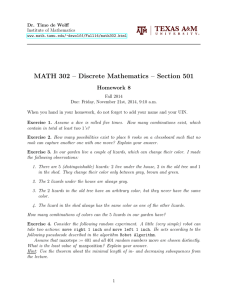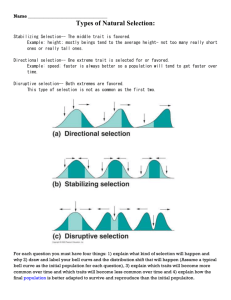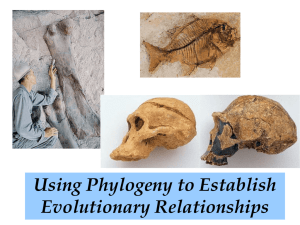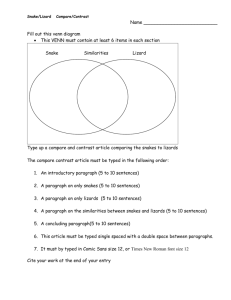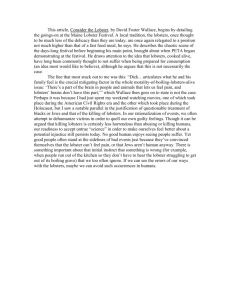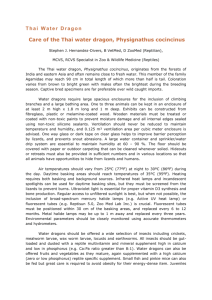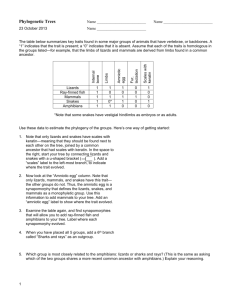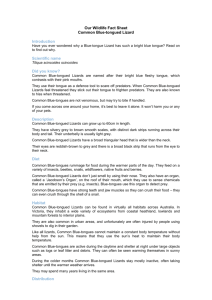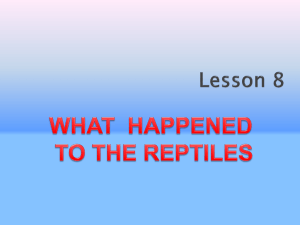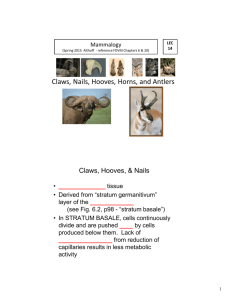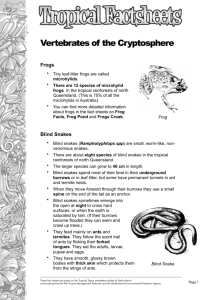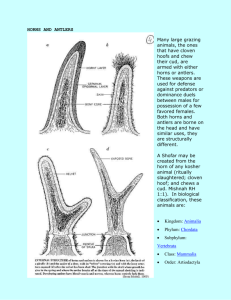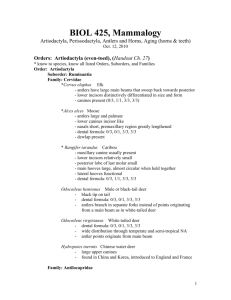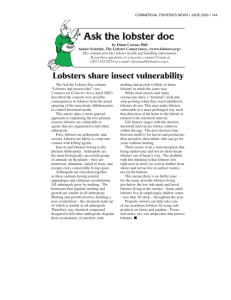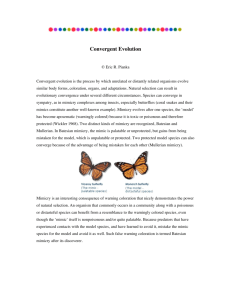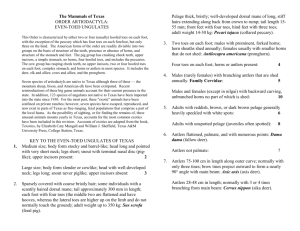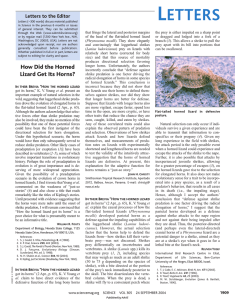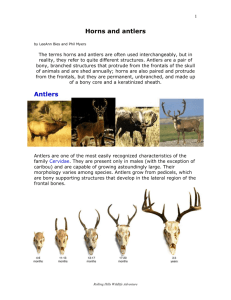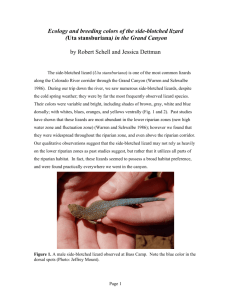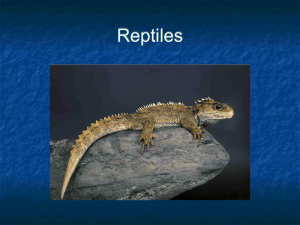Tadpole Telegram
advertisement
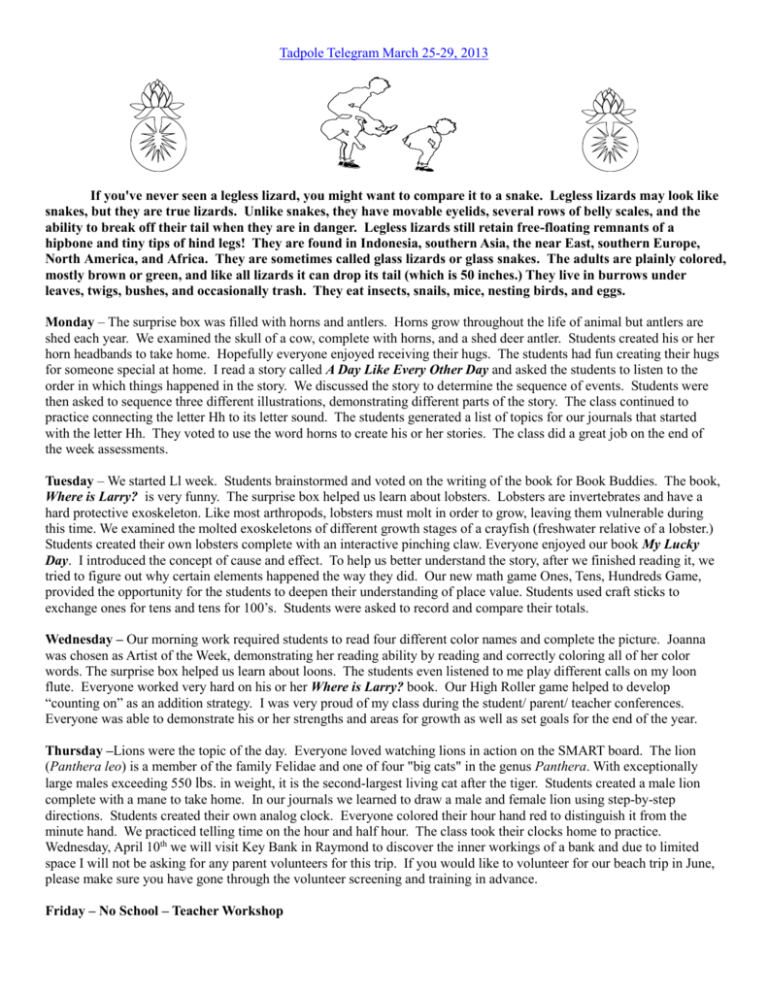
Tadpole Telegram March 25-29, 2013 If you've never seen a legless lizard, you might want to compare it to a snake. Legless lizards may look like snakes, but they are true lizards. Unlike snakes, they have movable eyelids, several rows of belly scales, and the ability to break off their tail when they are in danger. Legless lizards still retain free-floating remnants of a hipbone and tiny tips of hind legs! They are found in Indonesia, southern Asia, the near East, southern Europe, North America, and Africa. They are sometimes called glass lizards or glass snakes. The adults are plainly colored, mostly brown or green, and like all lizards it can drop its tail (which is 50 inches.) They live in burrows under leaves, twigs, bushes, and occasionally trash. They eat insects, snails, mice, nesting birds, and eggs. Monday – The surprise box was filled with horns and antlers. Horns grow throughout the life of animal but antlers are shed each year. We examined the skull of a cow, complete with horns, and a shed deer antler. Students created his or her horn headbands to take home. Hopefully everyone enjoyed receiving their hugs. The students had fun creating their hugs for someone special at home. I read a story called A Day Like Every Other Day and asked the students to listen to the order in which things happened in the story. We discussed the story to determine the sequence of events. Students were then asked to sequence three different illustrations, demonstrating different parts of the story. The class continued to practice connecting the letter Hh to its letter sound. The students generated a list of topics for our journals that started with the letter Hh. They voted to use the word horns to create his or her stories. The class did a great job on the end of the week assessments. Tuesday – We started Ll week. Students brainstormed and voted on the writing of the book for Book Buddies. The book, Where is Larry? is very funny. The surprise box helped us learn about lobsters. Lobsters are invertebrates and have a hard protective exoskeleton. Like most arthropods, lobsters must molt in order to grow, leaving them vulnerable during this time. We examined the molted exoskeletons of different growth stages of a crayfish (freshwater relative of a lobster.) Students created their own lobsters complete with an interactive pinching claw. Everyone enjoyed our book My Lucky Day. I introduced the concept of cause and effect. To help us better understand the story, after we finished reading it, we tried to figure out why certain elements happened the way they did. Our new math game Ones, Tens, Hundreds Game, provided the opportunity for the students to deepen their understanding of place value. Students used craft sticks to exchange ones for tens and tens for 100’s. Students were asked to record and compare their totals. Wednesday – Our morning work required students to read four different color names and complete the picture. Joanna was chosen as Artist of the Week, demonstrating her reading ability by reading and correctly coloring all of her color words. The surprise box helped us learn about loons. The students even listened to me play different calls on my loon flute. Everyone worked very hard on his or her Where is Larry? book. Our High Roller game helped to develop “counting on” as an addition strategy. I was very proud of my class during the student/ parent/ teacher conferences. Everyone was able to demonstrate his or her strengths and areas for growth as well as set goals for the end of the year. Thursday –Lions were the topic of the day. Everyone loved watching lions in action on the SMART board. The lion (Panthera leo) is a member of the family Felidae and one of four "big cats" in the genus Panthera. With exceptionally large males exceeding 550 lbs. in weight, it is the second-largest living cat after the tiger. Students created a male lion complete with a mane to take home. In our journals we learned to draw a male and female lion using step-by-step directions. Students created their own analog clock. Everyone colored their hour hand red to distinguish it from the minute hand. We practiced telling time on the hour and half hour. The class took their clocks home to practice. Wednesday, April 10th we will visit Key Bank in Raymond to discover the inner workings of a bank and due to limited space I will not be asking for any parent volunteers for this trip. If you would like to volunteer for our beach trip in June, please make sure you have gone through the volunteer screening and training in advance. Friday – No School – Teacher Workshop
